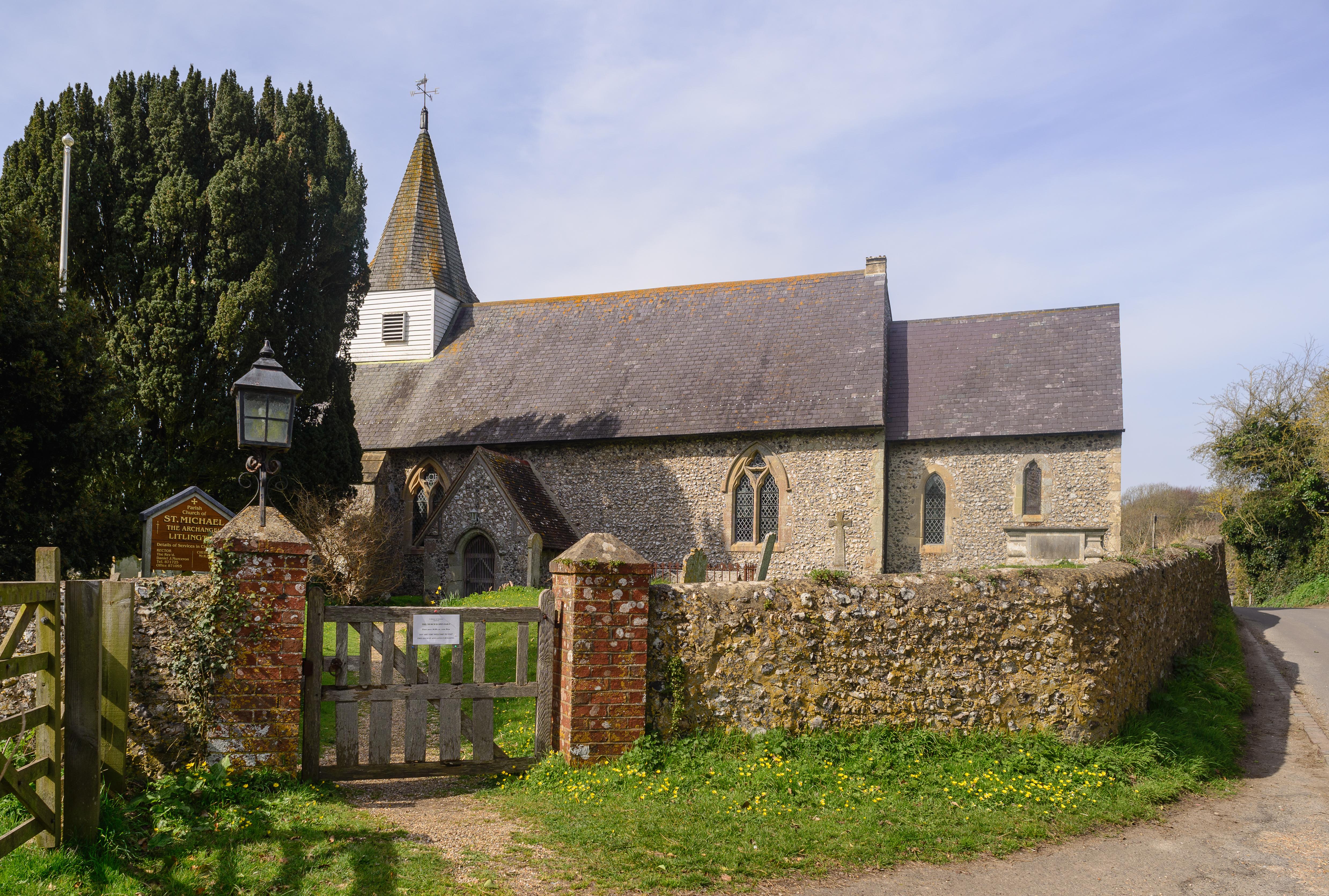St Andrew
Alfriston, Sussex
Standing on high ground beside the thatched 14th century parsonage, the church dates to around 1370, a strangely late date for this part of Sussex.

A picturesque downland church in the heart of the Cuckmere Valley.
Litlington, Sussex
A very good example of a Downland church, built of flint with stone dressings, a white painted weather boarded wooden belfry tower which supports a broach spire covered with wooden shingles.
The main part of the building is thought to have been erected in about 1150 AD, but there are windows in the chancel which may well be Norman, and the remains of two Norman window openings (since closed) are visible in the north wall of the nave. Interestingly, but inexplicably, the floor falls 13” from east to west. The massive beams which support the main roof are original. Once there were three, but the Victorians removed one close to the chancel arch, which caused the church to split apart – since rectified by the insertion of a steel tie-bar.
Between 1300 and 1400 the south porch was added and the chancel arch was re-shaped. At the same time the west end was altered to include the belfry and spire, access to which is via a very narrow spiral staircase. The timbers of both the belfry and the spire are original. Sometime between 1500 and 1520 the triple-lancet east window was replaced with the square-headed window which is still in place. The remains of the lancet window are visible externally. The font dates from the early 1500s, and the original mason’s chisel marks are clearly visible.
Alfriston, Sussex
Standing on high ground beside the thatched 14th century parsonage, the church dates to around 1370, a strangely late date for this part of Sussex.
Lullington, Sussex
Originally part of a much larger building, which was destroyed by fire (probably in the time of Cromwell), the tiny church of The Good Shepherd was rebuilt from the original chancel.
Wilmington, Sussex
Wilmington is a Downland village of Saxon origin, the present church was first built around 1200 as a chapel to the adjacent Priory and a feature of the churchyard is the ancient Yew tree, estimated to be 1600 years old, the trunk having a girth of 23ft.